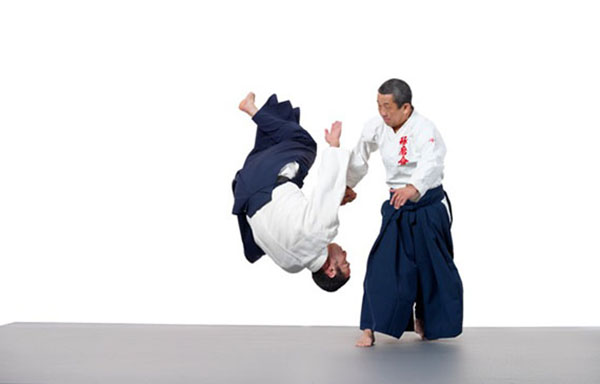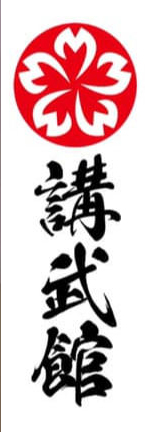
Slide


Slide 1
Seattle Aiki Club
Daito-Ryu Akijujutsu
Daito-ryu is am extremely philosophical art that challenges preconceived notions about movement and force. Rather than thinking in a linear or push-pull fashion, practitioners develop methods to avoid direct contact by creating and releasing tension in very specific ways so that force becomes unnecessary. Daito-ryu is about timing. It is about receiving an attack and taking more than what an opponent intends to give. This advantage creates Kuzushi, unstable positioning, which can be guided to an inevitable neutralizing conclusion. The force of an attack has a direction, it has power, and it also has a shape. Daito-ryu is about exploring the contours of conflict rather than colliding with force.

Benefits of Daito-Ryu

Daito-Ryu teaches body-movements that are necessary to absorb and minimize the impact of being thrown or knocked down. Basic Ukemi skills protect the skull and spine from injury and include forward, side and back rolls. Learning Ukemi can protect an individual form accidents that happen during normal life circumstances, like falling down stairs or being thrown from a bike.

Daito-Ryu also approaches problem solving in a unique way that supports thinking outside of traditional, force based, mechanics. These skills can be very useful in general circumstances that require non linear thinking to achieve results without confrontation.

Seattle Aiki Club is a dojo dedicated to understanding Daito-ryu Aiki Jujutsu. Daito-ryu is a traditional Japanese Martial Art that dates back to the 11th century and was the fighting style of the elite Samurai that lived in the castle walls. Although antiquated in certain ways, the general mechanics and overall philosophy are steeped in a mindfulness that have profound applications physically and mentally. Aiki is an internal communication that includes matching or harmonizing with spirit, mind, or energy. It is the foundation and philosophy behind the mechanics and what separates this from all other martial arts.
Origins of Daito-Ryu Aikijujutsu
Daito-ryu Aiki Jujutsu originated with Shinra Saburo Minamoto Yoshimitsu, a military commander in the Heian period (794-1185) and was handed down to the Takeda family in the province of Kai. This was then passed down to the Aizu clan as a secret and guarded martial art.
Sokaku Takeda-the restoration and rejuvenation of Daito-ryu
Sokaku Takeda taught Daito-ryu all over Japan on his many travels during the Meiji and Taisho periods to the early Showa period. As a result, the name of Daito-ryu Aiki Jujutsu became known and is why he is considered the founder of Daito-ryu Aiki Jujutsu.
Sokaku Takeda taught many students that would later become famous martial artists including, Morihei Ueshiba the founder of Aikido.
The teachings passed down to Takuma Hisa
Before World War 2, Takuma Hisa had been a sumo champion at university. He also learned Daito-ryu from Morihei Ueshiba and Sokaku Takeda at the Osaka Asahi newspaper in order to protect himself and staff in case of an attack. Takuma hisa was awarded the rank of eighth degree blackbelt in Aikido from Morihei Ueshiba and from Sokaku Takeda he received the Menkyo-Kaiden, the license of full proficiency.
Takeshi Kawabe- the leader of Kobukan
In 1978, Takuma Hisa awarded Takeshi Kawabe the Kyoju-Dairi, which is a license to teach Daito-ryu independently.
Seattle Aiki Club (SAC) is a direct, lineal branch of Kobukan and Takumakai, making it one of the few qualified organizations teaching Daito-Ryu in the United States. SAC is intentionally small to attract dedicated students, maintain high-quality training, and foster the camaraderie essential for this practice. The dojo welcomes anyone with a genuine interest in learning Daito-Ryu. SAC regularly participates in and hosts international training camps, as part of a broader community of Kobukan and Takumakai dojos. The Head Instructor, Kenneth Freeman (5th Dan), leads the club, which is guided through regular training camps conducted by Kawabe Takeshi, Shihan.
Connecting to the future, expanding into the future. Daito-ryu Aiki Jujutsu Kobukan
Daito-Ryu Aiki Jujutsu Kobukan was established under the leadership of Takeshi Kawabe with the aim of passing on to future generations the techniques taught by Morihei Ueshiba and Takeda Sokaku from 1936 to 1939.
Now, in order to protect this honorable tradition and to ensure that the transmission of the art continues to be firm and unshakeable, the students of Kawabe Shihan’s line have gathered to form Kobukan.

JOIN CLASS TODAY